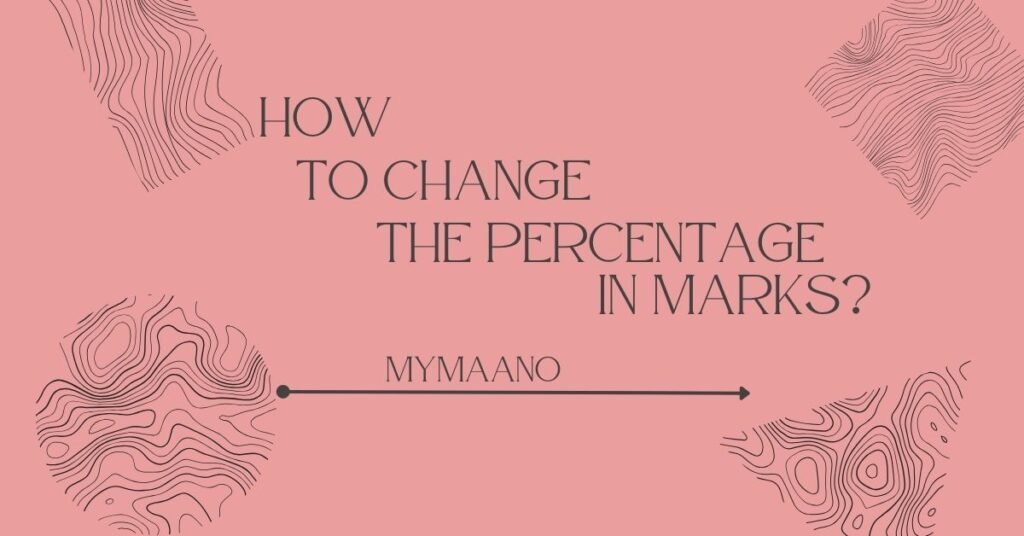Calculating percentages of marks is a fundamental skill that serves as a benchmark for assessing performance in various educational, professional, and personal contexts. Whether you’re a student striving to determine your academic progress, an educator tasked with grading assignments, or a professional assessing project performance, understand how to change the percentage in marks? Or accurately is essential. In this across-the-board guide, we will explore the step-by-step process of calculating percentages in a simple and user-friendly manner.
Understanding the Basics
Before delving into the calculation process, it’s important to grasp the fundamental concepts involved in calculating percentages.
What Is a Percentage?
A percentage is a way of conveying a number as a fraction of 100. It provides a standardized means of comparing values relative to a whole.
Why Calculate Percentages?
Percentage calculations are used in various scenarios, including:
- Academic Assessment: Determining grades and academic progress.
- Financial Analysis: Calculating discounts, interest rates, and taxes.
- Data Analysis: Representing proportions and changes in data.
- Project Management: Assessing project completion and progress.
- Health and Fitness: Tracking weight loss or body fat percentage.
The Formula for Calculating Percentages
The basic formula for calculating a percentage is simple:
Percentage (%) = (Part / Whole) × 100
In this formula:
- Percentage (%) represents the percentage you want to calculate.
- Part is the value you have (e.g., your score or the portion of a whole).
- The whole represents the total or the maximum value.
Calculating Percentage Scores
Calculating your percentage score is a common task in education. Here’s a step-by-step guide on how to do it:
Step 1: Identify the Maximum Possible Score
Begin by determining the maximum score achievable in the assessment or exam. It represents the total or 100%.
Step 2: Find Your Score
Next, ascertain the actual score you achieved in the assessment. It is the “part” of the formula.
Step 3: Apply the Percentage Formula
Now, use the formula:
Percentage Score (%) = (Your Score / Maximum Possible Score) × 100
Step 4: Perform the Calculation
Divide your score by the maximum possible score and multiply the result by 100 to obtain your percentage score.
Example: Suppose you scored 85 out of a possible 100 marks in a test:
Percentage Score (%) = (85 / 100) × 100 = 85%
Therefore, you achieved an 85% on the test.
Practical Applications
Percentage calculations have a wide range of practical applications in various fields:
1. Academic Assessment
Percentage scores are commonly used to determine grades and academic progress. Educators calculate percentages to assess student performance on assignments, exams, and overall course grades.
2. Financial Calculations
Percentages are crucial in financial calculations. They are used to calculate interest rates, discounts, taxes, and other financial metrics. For example, to find the discounted price of an item on sale, you would calculate a percentage of the original price.
3. Data Representation
In data analysis, percentages help represent proportions and changes. They are useful for visualizing data in charts, graphs, and reports, making complex information more understandable.
4. Project Management
In project management, percentages are used to track project completion and assess progress. Project managers calculate the percentage of completed tasks against the total project scope to gauge how far along the project is.
5. Health and Fitness
Health and fitness enthusiasts often use percentages to track progress. For instance, calculating the percentage of body fat lost during a weight loss journey helps individuals monitor their health goals.
Tips and Common Scenarios
While calculating percentages is a straightforward process, there are some practical tips and common scenarios to consider:
1. Rounding Percentages
Depending on your specific context, you may need to round percentages to a sure number of decimal places or the nearest whole number for clarity and consistency.
2. Dealing with Fractional Percentages
In some cases, you may encounter fractional percentages (e.g., 12.5%). Treat them like any other percentage; they represent a portion of a whole.
3. Calculating Percentage Change
To calculate the percentage change between two values (e.g., price increase or decrease), use the following formula:
Percentage Change (%) = [(New Value – Old Value) / Old Value] × 100
4. Percentage of a Percentage
To calculate a percentage of a percentage, first calculate the first percentage and then apply the second percentage to that result.
References
GET MORE INFORMATION AT MYMAANO.COM AND MUST SHARE YOUR THOUGHTS VIA COMMENTS

